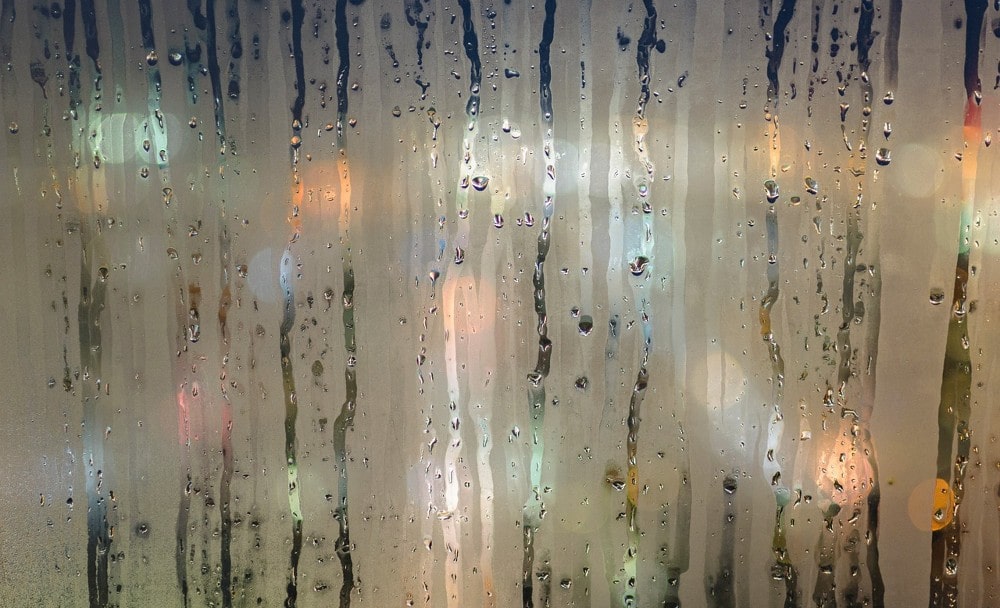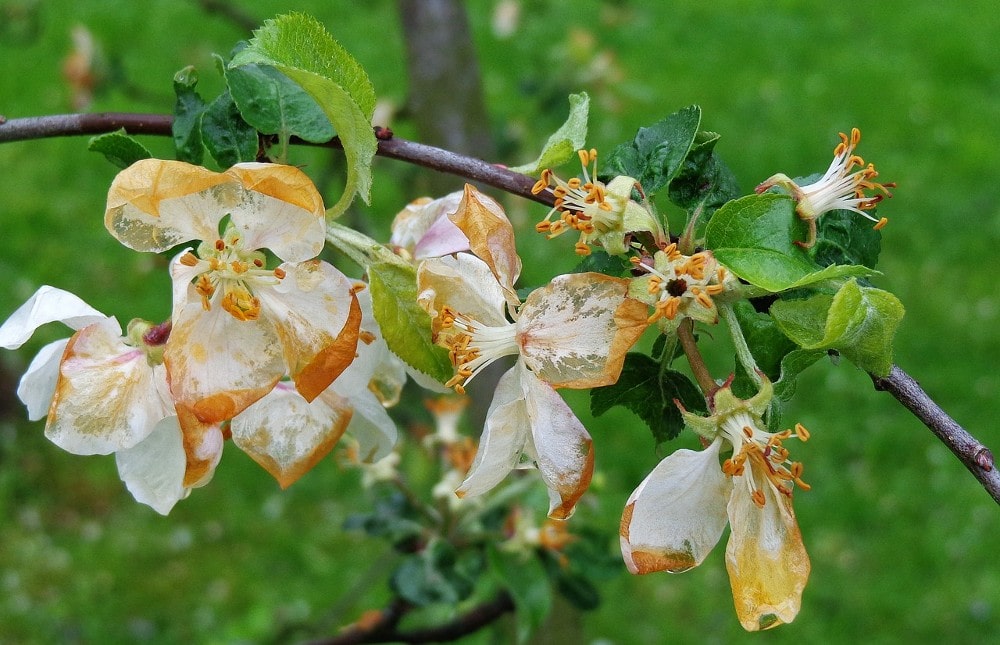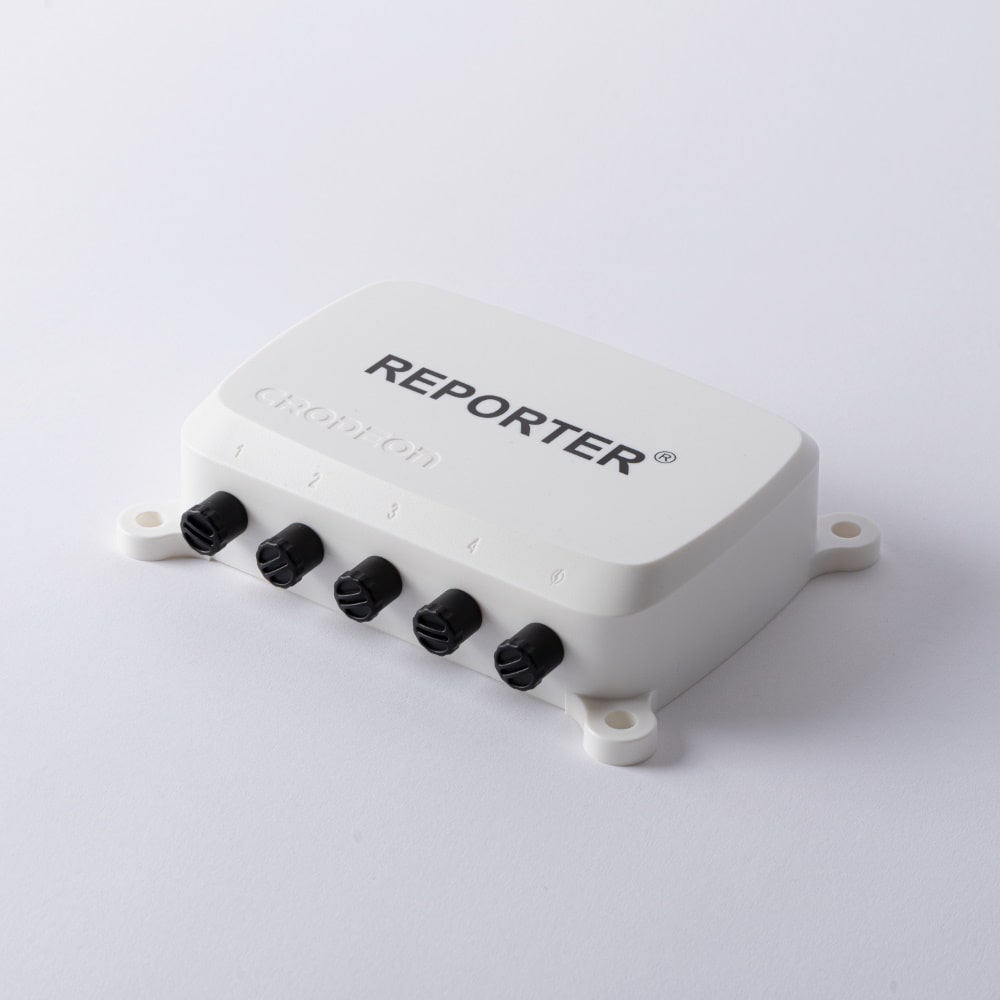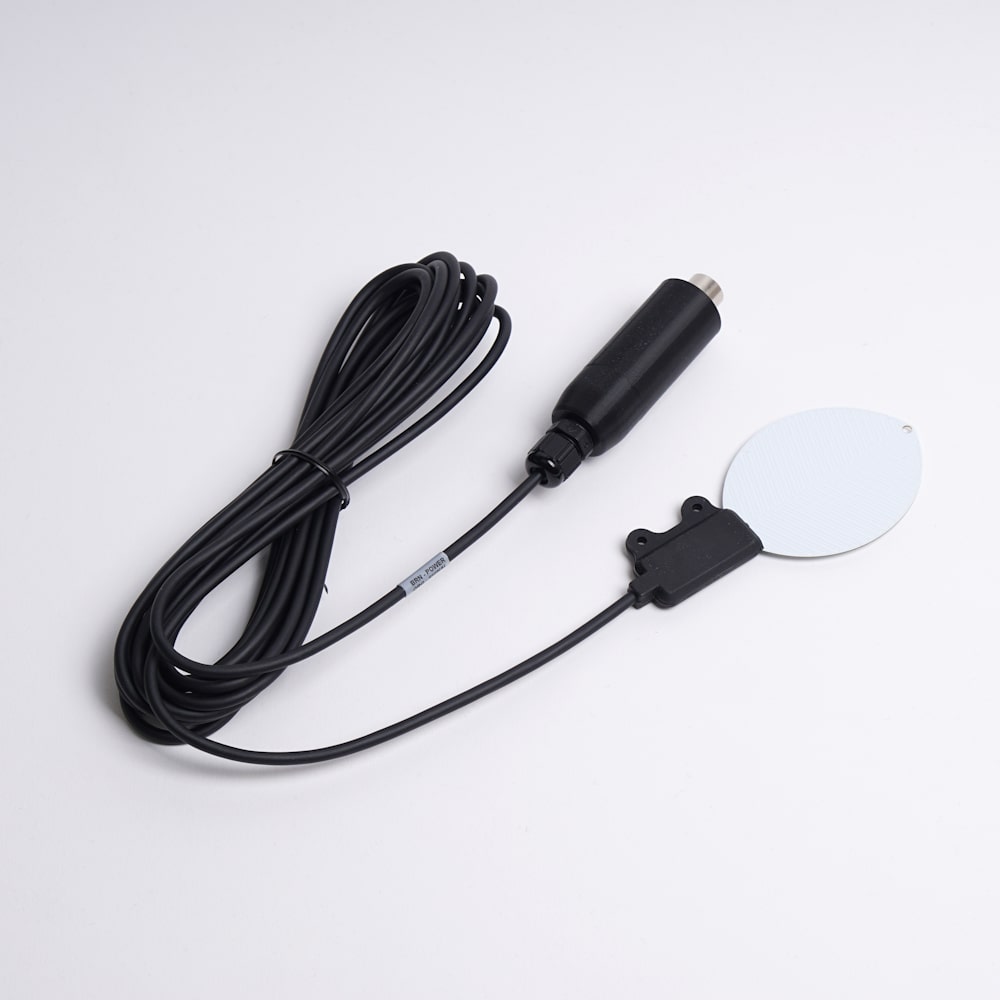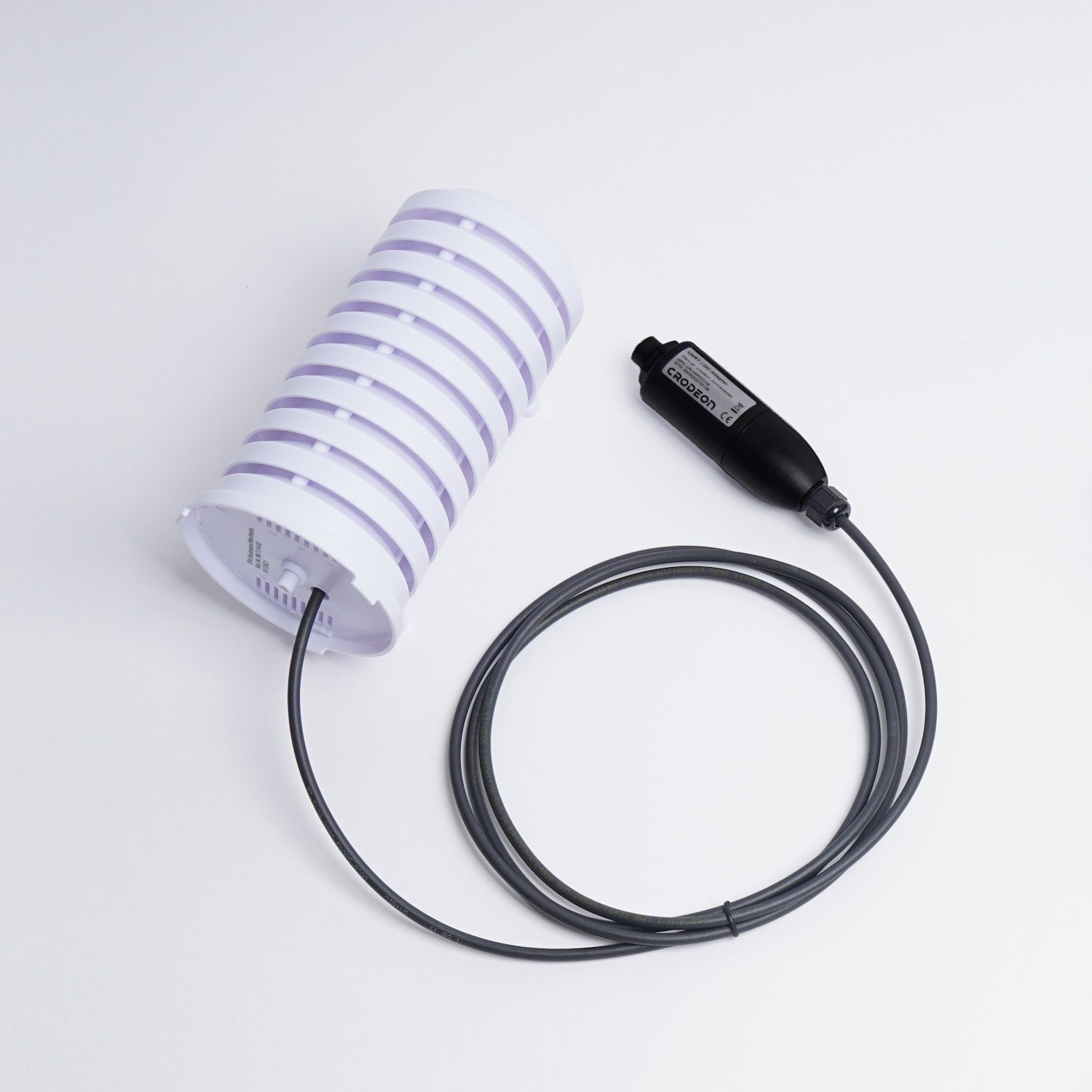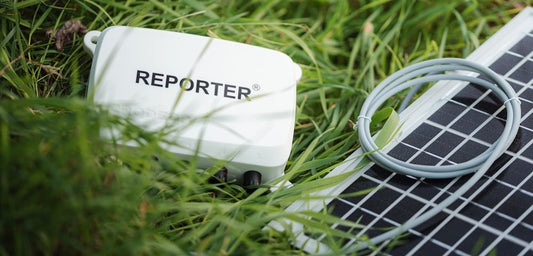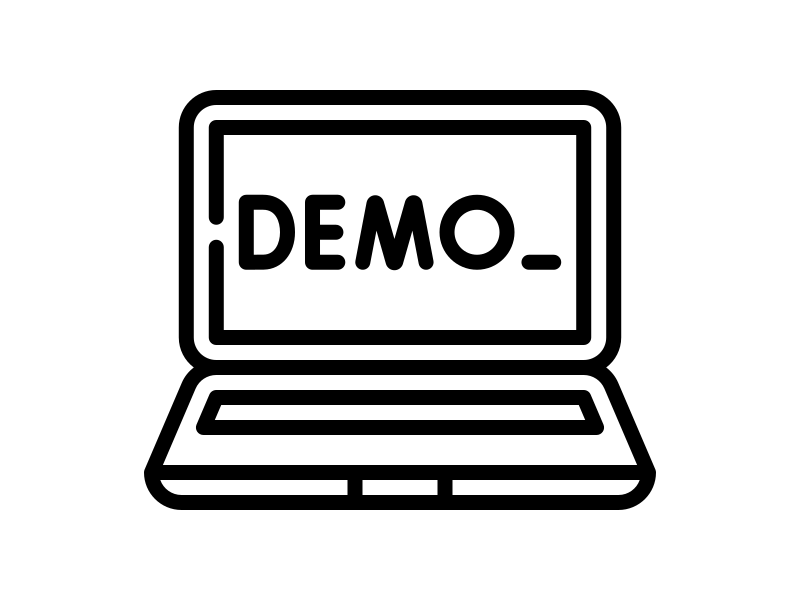Combined relative air humidity and leaf wetness measurement
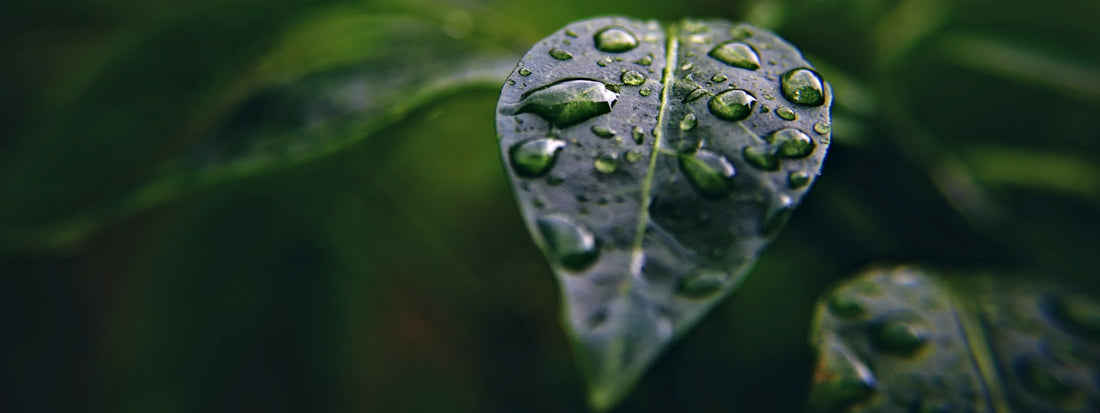
Keeping an eye on leaf wetness and relative air humidity is a great way to minimise fungal and bacterial infections in your crops. Whether in a greenhouse or outdoors in your fields, you want to be warned when the weather conditions place your plants at risk.
With today's sensor technology, measuring several parameters in real-time is no longer a complex endeavour. In this blog post we'll have a look at combined relative air humidity and leaf wetness measurement. We'll discuss the advantages of combining these sensors and look at how you can quickly start measuring them yourself.
Understanding leaf wetness sensors
A leaf wetness sensor detects the presence of surface moisture on the leaf of a plant. This can be liquid moisture (dew or water) or solid moisture (frost or ice). Most leaf wetness sensors measure between 0 (dry) and 15 (saturated). The Phytos 31 leaf wetness sensor measures dry, wet, and frosted.
A leaf wetness sensor is often used to measure how long the surface of a leaf remains moist to determine if the leaf needs to be treated against infections. This way these sensors are often used to monitor fungal and disease control in the agricultural sector. Leaf wetness measurement can also be used to monitor the operation of an irrigation system.
The graph below shows an example of the data from a leaf wetness sensor over a period of ten days.

Understanding relative humidity sensors
A relative humidity (RH) sensor measures the relative humidity and the temperature of the air. Relative humidity is a ratio that indicates how much water vapour the air contains compared to the maximum amount of water vapour the air can contain at that moment.
RH of 100% means that the air is saturated and cannot absorb any more water; it has reached the dew point temperature. A sensor that measures a combination of RH and temperature can determine the wet bulb temperature and dry bulb temperature as well.
Now that we understand these individual sensors, let's see how they work together to protect your plants.
Measuring leaf wetness and humidity
Dew droplets form when water vapour condenses on a surface. This phenomenon occurs when the surface temperature falls below the dew point temperature of the surrounding air.
When combined relative air humidity and leaf wetness measurement take place, condensation on the leaf surface can be predicted and its duration measured. The combination essentially works as a leaf monitoring system for your plants. This information can be used as input for disease prediction (source: Bouma & al., 2008). You can read more about plant disease prevention in our blog about Pseudomonas syringae.
The graph below shows an example of how air temperature, wet bulb and leaf moisture relate to each other. We clearly see that leaves remain wet, especially at night until morning, and that higher temperatures lead to lower leaf wetness measurements.

Measure leaf wetness: how to
Arguably, the fastest and technically easiest way to measure the humidity of a leaf's surface is by visual inspection. However, this is an arduous and time-consuming task. Data collection is not automatically gathered by manual observation. Moreover, it is not easy to objectively and consistently determine how ‘wet’ a plant leaf is.
An easier and more reliable way to start measuring is with sensors. Let's have a look at the leaf monitoring system consisting of Reporter (our plug & play IoT data logger), a leaf wetness sensor (Phytos 31), and a relative humidity sensor (Sensirion). This can be completed with a weather sensor for measuring local weather data.

Reporter: leaf wetness measurement made easy
In today's world there's little time for manual work. A sensor module with the right sensors can help you automate time-consuming tasks like monitoring leaf wetness.
Meet our versatile and user-friendly sensor device for remote monitoring: Reporter. The sensor module is compatible with renowned sensors such as the aforementioned leaf wetness sensor by METER Group and the Sensirion AG SHT35 chip in our relative humidity sensor.
Easy data logging
Reporter is connected to the GSM network and uses cellular data (2G/4G) to stream its live data to the cloud (Crodeon Dashboard) where it gets logged. All data is available in real-time, and historical logs can be downloaded as csv file. All settings can be adjusted in the cloud platform, such as changes in measurement interval or altering the alarm notifications and measurement thresholds.
Every Reporter comes with a REST API to allow you to seamlessly integrate your data in third-party applications or software to calculate disease probability.
Last but not least, Reporter is weather and waterproof: IP67, meaning that you can place it outside in your field. Reporter can be powered through the power grid or through solar power by its own robust solar panel.

Where to use the leaf monitoring system?
As previously mentioned, Reporter can be used indoors and outdoors, as long as there's a strong cellular data connection. You can use this monitoring system with plant humidity sensors in:
Greenhouses
Take tomatoes and cucumbers for example that are susceptible to infections due to moist leaves. Having better insights can help you optimise irrigation and ventilation in your greenhouse to prevent these issues.
Fruit fields (vineyards, orchards)
Many fruit trees can be impacted by bacterial infections caused by prolonged high humidity. These diseases can often be prevented when the plants are treated in time.
Vegetable crops
Powdery mildew can affect many different kinds of vegetables. Infections often occur during wet and cold weather. Treating the crops in time can prevent the infection from occurring or growing.
Green walls
The herbaceous plants used in green walls can suffer from infection when their leaves stay wet for too long. Read the blog below to learn more about green wall monitoring.
Are you ready to sprout your new monitoring project?
Don't hesitate to reach out to us if you still have any questions!
Sources
*Bouma & al. (2008). “Moisture in the air is crucial for absorption resources” (https://edepot.wur.nl/188)
FAQ
Does the Phytos 31 measure leaf surface temperature?
No, the Phytos 31 leaf wetness sensor does not measure temperature. However, the sensor can be combined with a relative humidity sensor to function as a leaf temperature sensor to measure and monitor the ideal leaf surface temperature of your crops.


